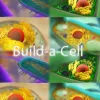Take a look inside 4 images
Build-a-Cell
Pros: Tons of well-presented information covering different types of cells.
Cons: A lack of playfulness leaves students wondering whether they're playing or merely walking through a lesson.
Bottom Line: As far as games go, Build-a-Cell won't wow, but for self-motivated students looking to dig into cell structure, it provides some sound interactive exploration.
Teachers can assign outside worksheets or other structured resources for students to complete as they build each cell, and to make sure students are extending and applying their learning. Avoid timing students, as this will encourage them to click through the exercise without absorbing the information. Teachers can also use Build-a-Cell as a part of larger science lessons contained on the Spongelab website. To extend learning, get students to use basic crafting and building materials (or maybe even digital platforms like Minecraft) to create a model of a cell.
Build-a-Cell bills itself as a game, but don't expect anything flashy. It's more of a click and drag interactive app that shows students the inner components of a variety of cells, including plants, animals, fungi, and bacteria. Students drag each portion of the cell into the main part of the screen and see information pertaining to each organelle added. Some cell parts must also be built before they can be added, providing extra detail.
There's no question that Build-a-Cell has tons of information to offer students; the issue is that it's only a small step above a textbook, offering very little in the way of gameplay. Lacking this game-based incentive, Build-a-Cell risks falling prey to the very thing games are often built to combat -- disengagement. However, self-motivated students will find enough interesting information to satisfy most assignments and curricula about cells. In this way, Build-a-Cell is one of those activities that should be used very thoughtfully. If students' expectations are tempered, or if it's only used with students already bitten by the biology bug, it can offer a nice change of pace to research and textbook study.













